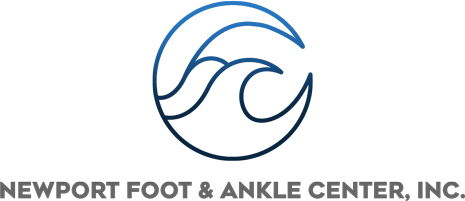HEEL PAIN
Newport Beach
Did you know? The human foot houses 26 bones, and the heel bone is the largest. True for any other bone in the foot, or the rest of the body, the heel bone can become injured, and when it does, the pain can range from annoying to completely disabling. Figuring out what is causing the pain and then treating it is crucial because unchecked heel pain issues can develop into larger foot, gait, and balance issues later.
There are a variety of conditions affecting the feet that can result in heel pain in Newport Beach. Plantar Fasciitis and Achilles Tendonitis are two of the most common.
Plantar Fasciitis: A band of fibrous tissue, called fascia, runs along the bottom part of the foot, called the plantar surface – from the heel up to the ball of the foot. When the fascia is inflamed, it results in a condition called plantar fasciitis. Common among athletes who play sports in which a lot of running or jumping occurs, plantar fasciitis can be extremely painful. The inflammation and pain, which is typically in the bottom of the heel, can be worsened by wearing shoes that don’t have proper arch support.
Achilles Tendonitis: Unlike plantar fasciitis, where the heel pain is at the bottom of the foot, pain associated with Achilles Tendonitis is in the back of the heel. This condition features inflammation of the Achilles tendon, which runs down from the backside of the ankle and attaches to the heel bone. Achilles Tendonitis can affect those who walk or run a lot, as well as people who are prone to tendon tightness.
Heel Pain Treatment Options
At Newport Foot and Ankle, we treat many athletes and active individuals who feel sidelined by heel pain in Orange County. The good news is that the majority of heel pain issues can be adequately addressed with conservative treatment options. There are some cases in which the treatment of heel pain conditions warrants surgical intervention. We’re proud to offer state-of-the-art diagnostic options to get to the bottom of what is causing the pain, and then to expertly and innovatively treat it so that our patients can get back in the game.
Meet Topaz and Tenex.
Topaz:
The goal of the minimally invasive Topaz procedure (medically referred to as percutaneous radiofrequency microdebridement) is to effectively address plantar fasciitis through the removal of diseased tissue and the promotion of healing cells directly into the inflamed fascia of the affected heel. This procedure is expertly performed by Dr. Haupt in the operating room and involves making a minimal incision (only about an inch long) on the plantar heel to remove pieces of built-up scar tissue. As the removal of the small pieces of damaged tissue occurs, radiofrequency energy is guided into the area to vascularize the fascia and promote healing. A significant benefit of this heel pain in Newport Beach procedure is that it quickly and precisely addresses and removes the affected tissue, with less disruption of the surrounding tissue of the heel and remainder of the foot.

Tenex:
The Tenex procedure is also minimally invasive and is specifically designed to identify and then remove painful scar tissue from tendons. Tenex is useful in the surgical treatment of both plantar fasciitis and Achilles Tendonitis. The procedure itself is performed expertly by Dr. Haupt under only local anesthetic to the affected area of the heel. The tip of the device used in this procedure is about the same circumference as that of a toothpick and is inserted into the heel area via guided ultrasound. The embedded device emits ultrasonic energy designed to break apart scar tissue, which is then suctioned and removed. The procedure r minutes to complete, and the small opening in the heel does not require stitches, only a small adhesive bandage.

MLS Laser:
MLS Laser, short for Multiwave Locked System, is a safe, effective medical treatment used for heel pain in Newport Beach, it uses wavelengths of light to reduce inflammation, reduce pain, and stimulate repair to the tissue found in your foot and ankle. The laser beam triggers a series of biochemical reactions within the tissue, which promotes the tissue to heal. MLS laser therapy can be used to treat conditions such as musculoskeletal pain, sports injuries, and arthritis.
If you or someone you know is dealing with the painful effects of help pain, contact us today. With a breadth of experience in heel pain treatment, Dr. Haupt and his expert team are here to help.


